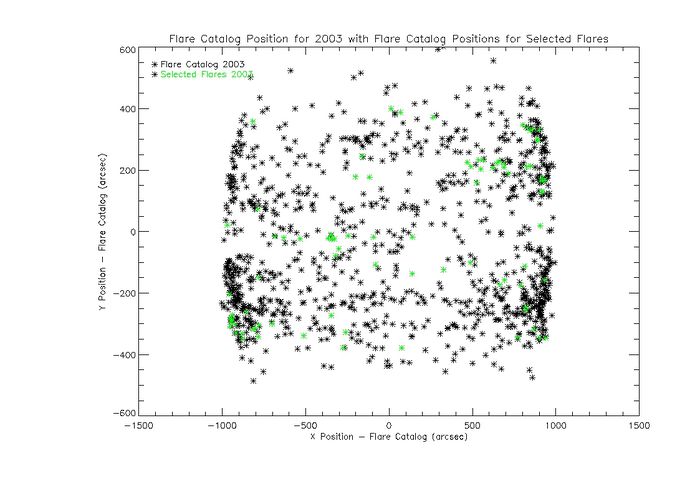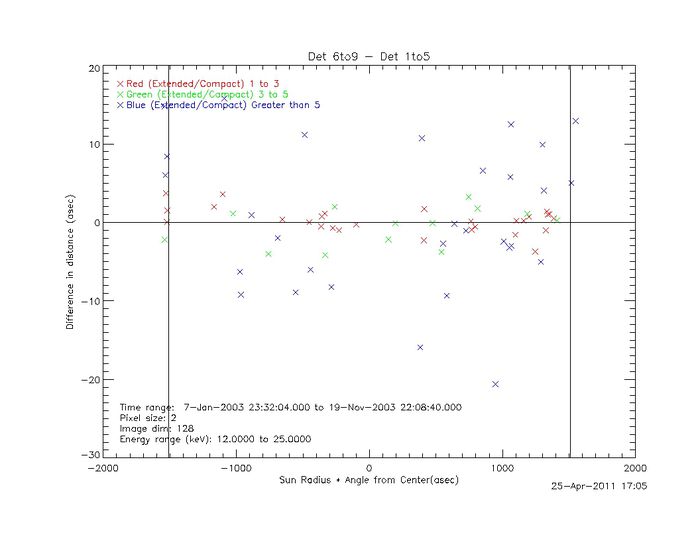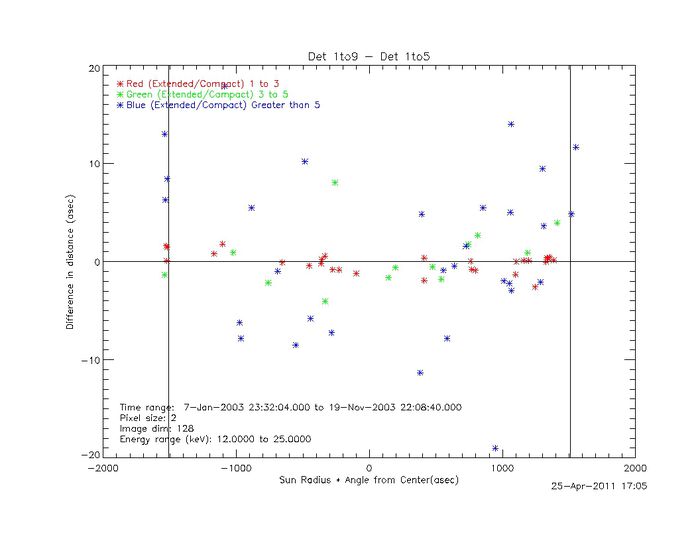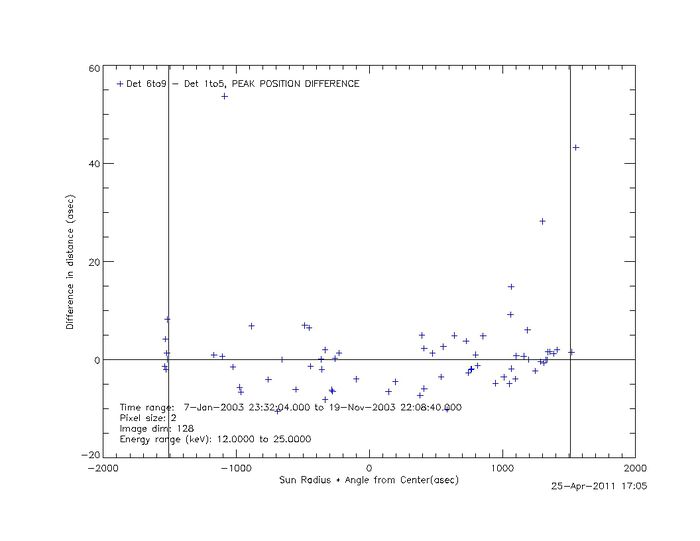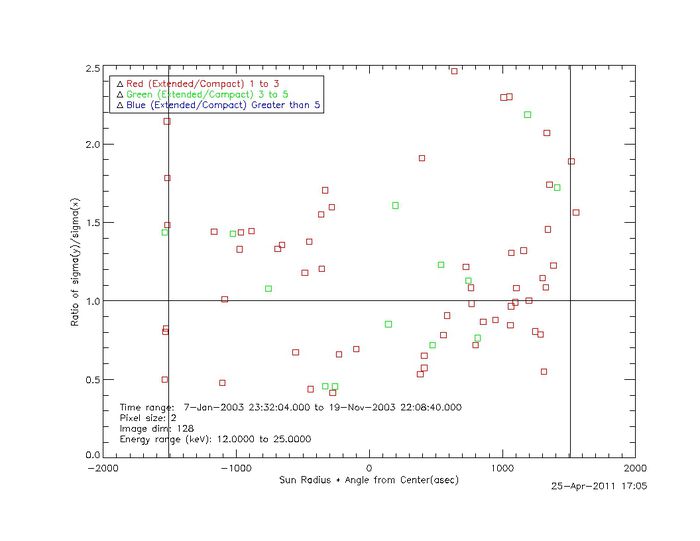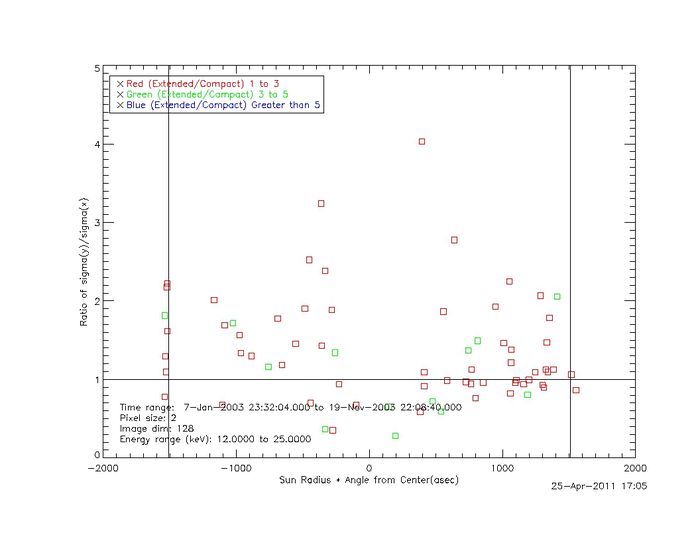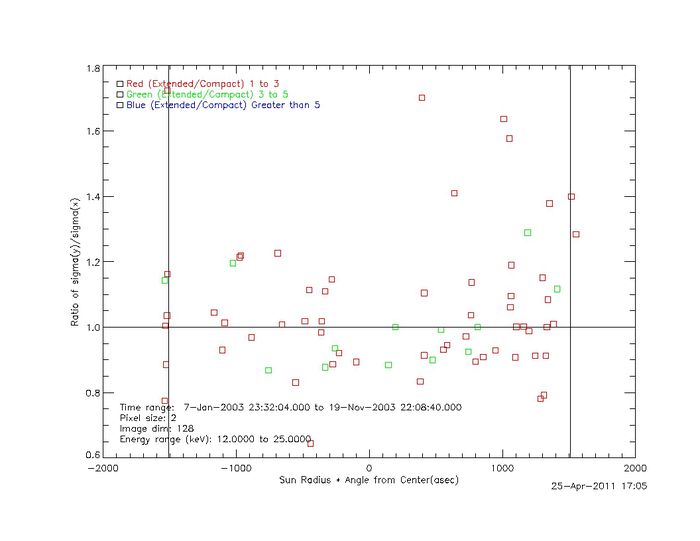Weekly Report 22Apr2011
From RHESSI Wiki
RHESSI Albedo Image Test
RHESSI Clean Imaging techniques were used to image a large number of flares. For each flare three different detector combinations and two different energy bands were used. The following parameters were used: The flares used were decided upon by the RHESSI response in the 25keV-50keV bands.
- Time: Decided by the peak of the 25keV-50keV energy band for each flare
- Energy: 12keV to 25keV, or 25keV to 50keV
- Detectors: 1 to 9, or 1 to 5,or 6 to 9
- Pixel Size: 2 arcsec by 2 arcsec
- Image Size: 128 pixels by 128 pixels
- Clean Beam Width Factor = 2
Clean images were made with each for each energy band with each detector combination. For each image the centroid of the source was measured, the total flux in the image was measured, and the standard deviation in the x and y direction for each source was measured. Using these measurements the plots below were made.
The new analysis below was done because of the last set of data analysis showed an asymmetry in the distribution of flares. One third of the flares were in the negative heliocentric x hemisphere with two thirds in the heliocentric y hemisphere. This turned out to be an analysis issue with the selection of the heliocentric X position. The selections were done using all detector combinations instead of thee position for the flare. This lead to discrepancies in the flare position.
The plot below shows the actual flare position of all flares which reached the minimum flux value required in black. The flares which were actually selected are in green. These met additional criteria for the flux in the 25keV to 50keV energy band.
The plot shows that there were more flares selected in the positive heliocentric positive x hemisphere, however the numbers were not as many as appeared in the earlier analysis. This plot led to the issues discovered.
The plot below shows the difference in the centroids for images made with detector 6 to 9 minus detectors 1 to 5. This shows the displacement of the extended source with respect to the compact source.
The plot shows that the distribution of flares around the center are about 40% in the negative heliocentric X hemisphere compared to about 60% in the positive. The points which show a difference of larger than 10 arcsec are being looked at more closely. This displacement may be due to foreshortening if the extended source is displaced toward the disc center.
The plot below shows the difference in the centroids for images made with detector 1 to 9 minus detectors 1 to 5.
There are instances were the differences for the sources made with all detectors and the compact source are large. This may be due to the extended source dominating the image. Those instances are being examined closely.
The position of the peak pixel for the extended source subtracted from that for the compact source is shown below.
Once again this can be used to see if the extended source is displaced however the peak positions of a single pixel are less reliable than the centroid positions.
The group of plots below show the ratio of the standard deviation in y and the standard deviation in x for each detector combination. Each plot is color coded by the ratio of the flux in the extended source to the compact source.
The plot below shows the ratio of the standard deviation in y over the standard deviation in x for images made using all detectors.
The plot below shows the ratio of the standard deviation in y over the standard deviation in x for images made using detectors 1 to 5.
The plot below shows the ratio of the standard deviation in y over the standard deviation in x for images made using detectors 6 to 9.
The three plots above may show the foreshortening of the source in the image if the ratio is large and the location of the source is near the limb. The ratios that meet this criteria for the extended source (images using detectors 6 to 9). There are five flares which fit the criteria. These images are being looked at more closely.
Goals
- Make plots of the variation in solar radius and axis angle with time.
- Check flare near the limb with large ratios of the standard deviation in x to the standard deviation in y for the extended source.
- Check results for 2002 flares.
